Why are European gas prices so high?
2021 has seen unprecedented gas and electricity prices. The severely tight gas market scenario that persisted throughout the final months of 2021 was caused by a combination of rising demand and lower-than-expected supply that led to the European gas market crisis. Halted Russian pipeline supply flexibility and lower-than-average underground storage inventory levels added to the anxiety as the heating season began. And this is when Europe had to compete with Asia for LNG gas while LNG supply outages set new records in 2021 as shown by the IEA market study below.
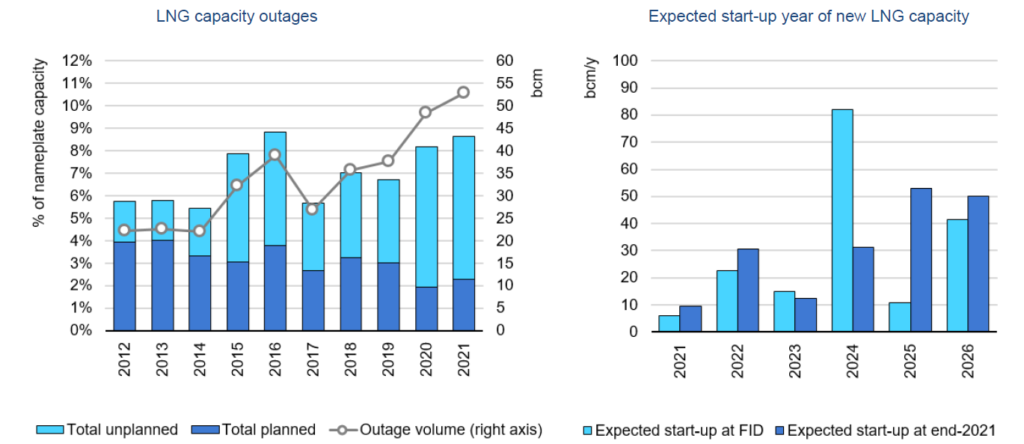
However, the impact of weather conditions and the sufficiency of the gas storage levels in Europe this winter was exaggerated by market participants, resulting in significant price volatility in H2 2021. Mild temperatures realized throughout this winter, combined with increased LNG intake, helped to ease the European power price at the end of 2021, but any sign of colder weather or tighter supplies can push prices higher again.
In fact, since the end of Jan’22, European gas prices have started to bounce up back again after reaching record levels last year. One of the main drivers for that is the geopolitical tension between Russia and the West. If the war situation in Ukraine was to deteriorate further, we can see gas and power prices in Europe increase more than 100% from the current levels. According to data from Refinitiv, the natural gas reserves in Europe’s storage facilities as of Feb’22 are around 30%, which is much lower when compared to the historical average.

And one of the main reasons for the low gas storage in Europe is the reduced gas flows via Russian pipelines. About 40% of Europe’s natural gas is supplied by Russia, the European Union’s largest gas supplier. Although in January, Europe’s LNG imports reached a new high, with over 45 percent coming from the United States, it’s still not sufficient to balance the reduced Russian flows. And concerns regarding Russian gas deliveries to Europe have grown as tensions between the West and Russia over Ukraine have risen.
The monthly Y+1 TTF NL Gas Price Historical Evolution since 2005, EUR/MWh
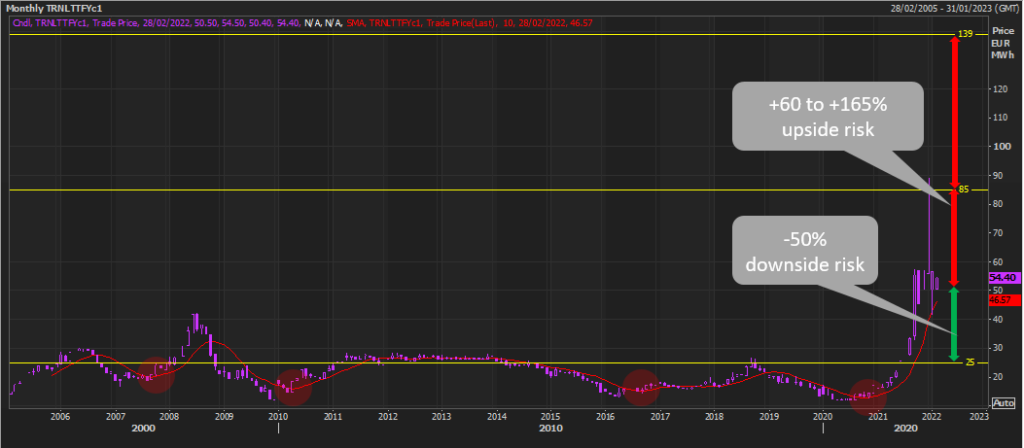
On the chart above, we have the historical evolution of year-ahead forward Dutch TTF Y+1 gas price since 2005. The candlestick chart is a monthly average gas price in Europe. The red line is a 10-month simple average.
This long-term price chart is a good indicator for spotting extended bullish and bearish price trends. Every time the monthly candlestick price closed above the 10-month average, it’s a likely indicator of a start of a prolonged bull market cycle and wise versa. The last time gas price breached above the 10-month average was back in October 2020. Since then, we have seen unprecedented gas and electricity prices. German Power Cal+1 contract increased from 40 EUR/MWh to 220 EUR/MWh as of the end of December 2021, which is a +450% increase.
At this time, the gas market price continues to remain in the bull cycle despite the recent correction from the end of December. The ongoing tensions between Russia and Ukraine and the low gas storage across Europe continue to support these high market price levels.
The consequences of the European gas market crisis
Based on the long-range historical price support and resistance levels we can try to determine upside and downside price risks. Should there be an armed conflict in Ukraine and/or the news about Nord Stream 2 pipeline being delayed beyond 2022, there’s a possible upside price risk of +60 to 165% from the current level of 55 EUR/MWh for Y+1 EU forward gas contract. For the downside scenario, we can expect to see a price correction of -50%. The downside scenario is based on the assumption that there is no war in Ukraine and the mild weather condition this winter prevails.
The dynamics in the EU gas market will determine the evolution of electricity market prices throughout 2022 because the cost of gas-fired power generation set the wholesale electricity market prices (for more details, please read my previous article on the marginal production costs of a power plant and a merit order effect). It means that a market gas level is a major risk for the price of electricity in Europe today. While gas use in power generation is likely to increase as coal and nuclear energy are phased out.
An average impact on the price of electricity for each gas 1 EUR/MWh movement has a 2 EUR/MWh impact on power price. Therefore, in the bull case gas market scenario, we can expect the price of electricity in Europe to more than double from the current levels as Y+1 EU gas price can revisit the 139 EUR/MWh high observed in the mid-December 2021 or even higher levels. As a result, the power markets to remain extremely volatile in 2022 as uncertainty around gas supply from Russia remains. Corporate power buyers should take this risk factor into a consideration when preparing budget plans for next year.
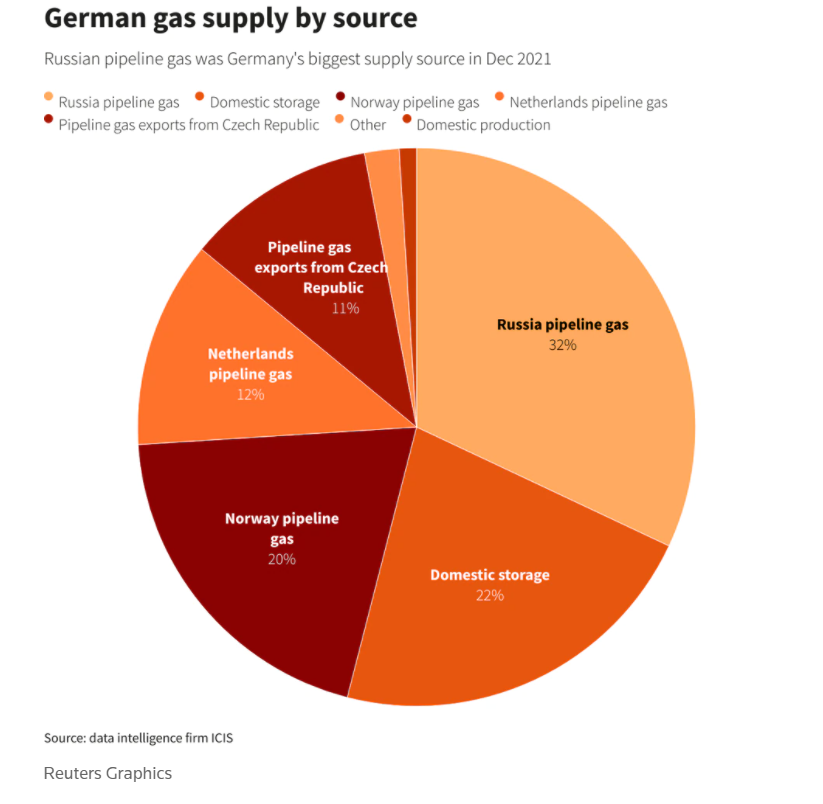
On a bearish market side, we have the following developments to watch out although the probabilities remain quite low:
- The possible increase of Dutch gas production at the Groningen field. If the government accepts the output increase in a decision scheduled before April 1, an additional 1.1 billion cubic meters of gas will be sent to Germany.
- The strong delivery of LNG gas to Europe. According to Reuters, the LNG market surplus to grow by 9bcm in 2022 is expected to find a home in Europe. While Chinees LNG demand growth is expected to slow down in 2022 vs 2021 because of the increased piped gas delivery through the Power of Siberia from Russia and the increased domestic production. China is the world’s largest LNG importer.
- The falling LNG import demand from emerging economies such as Brazil is due to the high market prices and the gradual recovery of hydro generations. Imports to Brazil increased by more than 200% last year. The country was affected by a severe drought that started at the end of 2020 and lasted until the end of 2021. As a result, hydropower generation was reduced significantly, resulting in a considerable increase in gas demand in the power sector.
- The strong incentives to increase gas production for producers around the world because of the current high-price environment.
If you wish to learn more about the current gas crisis in Europe and where power prices can go in 2022, please read the next article here. Comment below if you liked this article!

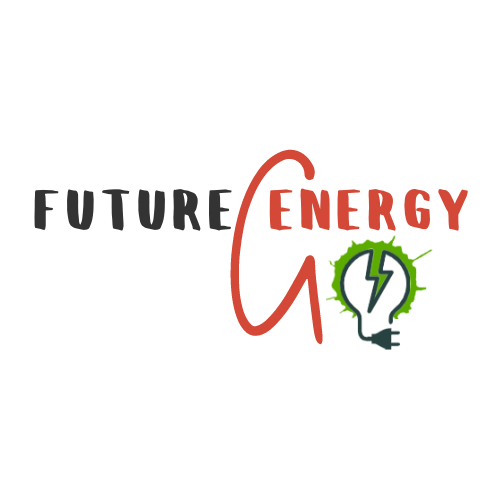
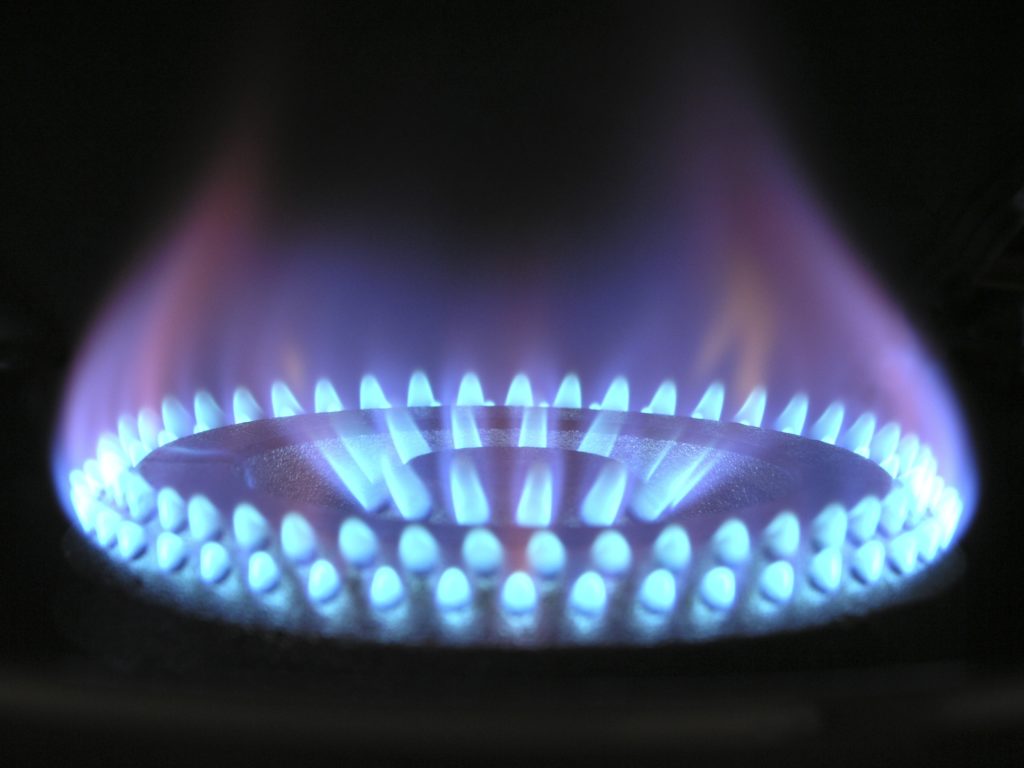
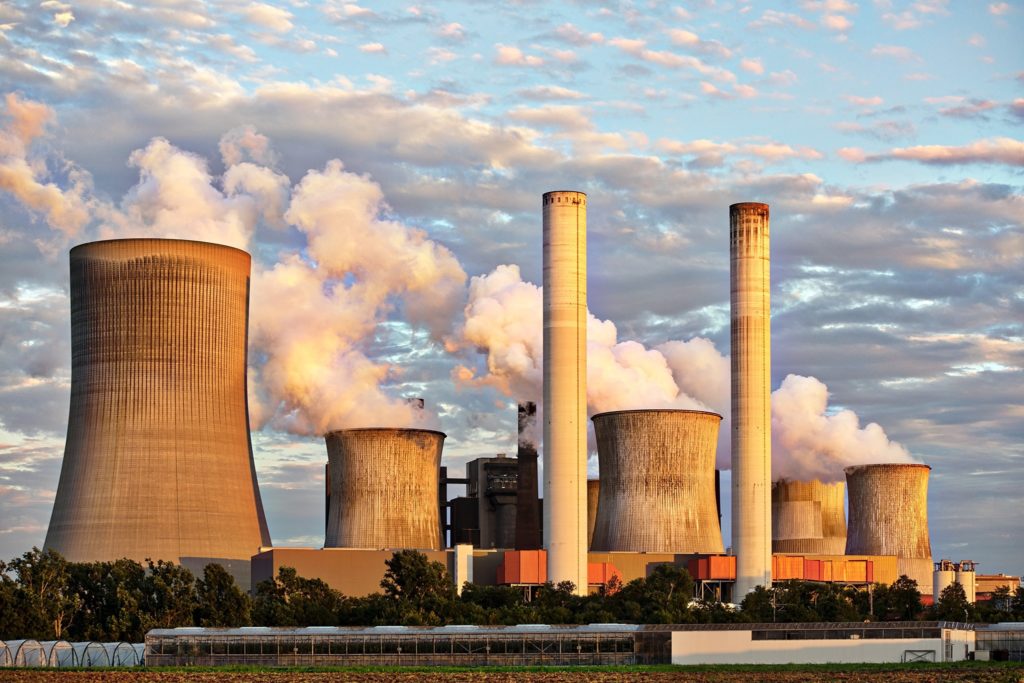
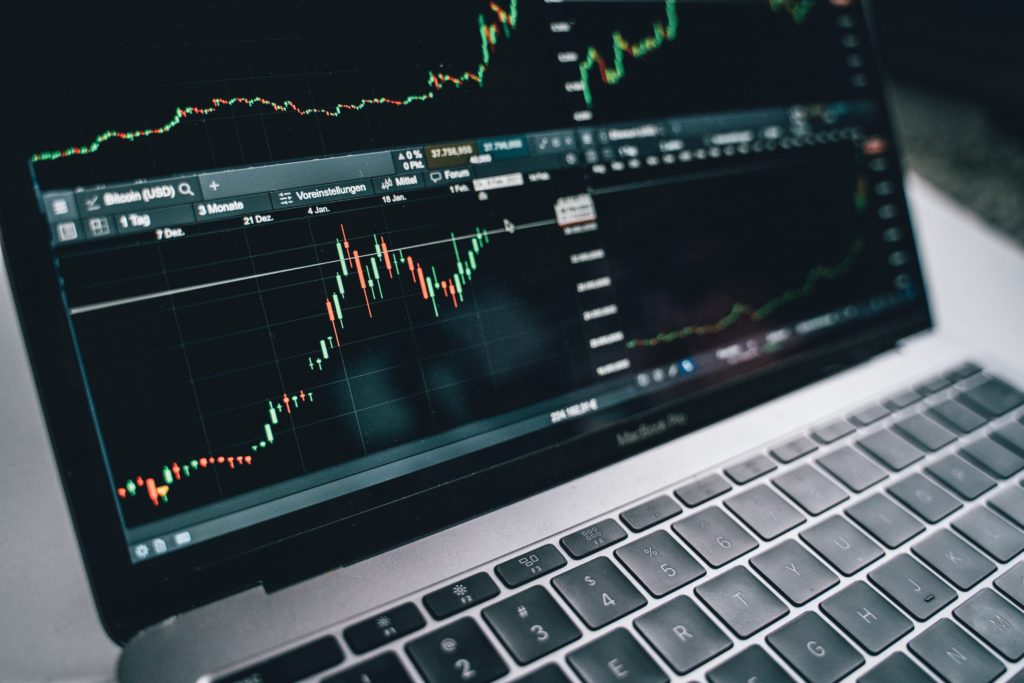


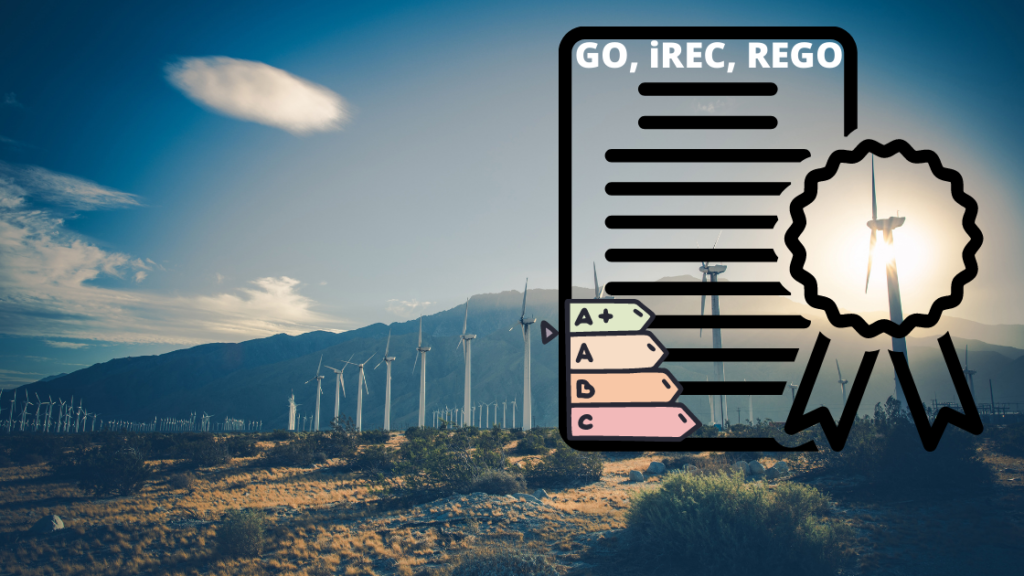
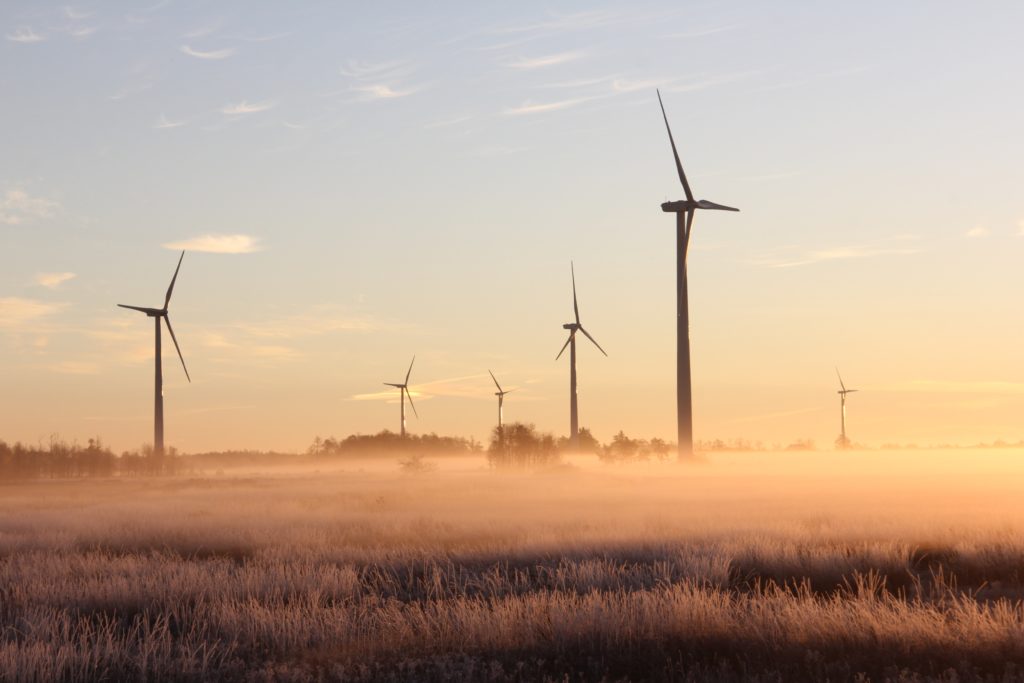
Pingback: (2022) Review Of Electricity Market Report January 2022 By The IEA | Futrue Energy Go
Pingback: (2022) Spain And Portugal Are Capping Gas Prices To Calm Down The Power Market | Futrue Energy Go
Pingback: (2022) The War In Ukraine & Soaring Power Prices | Future Energy Go